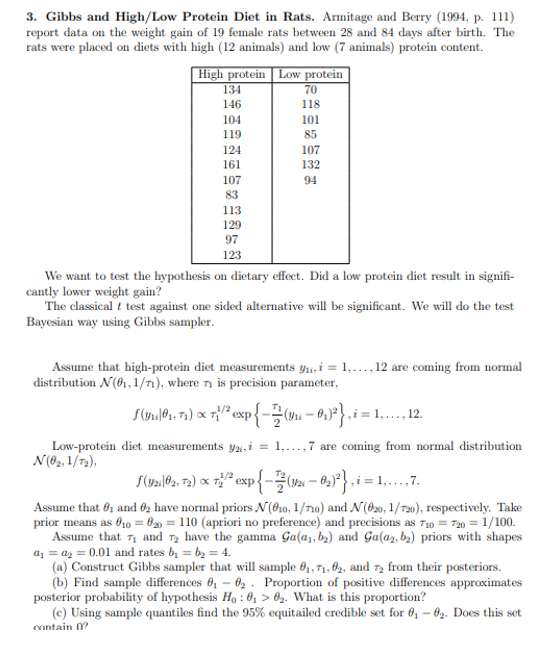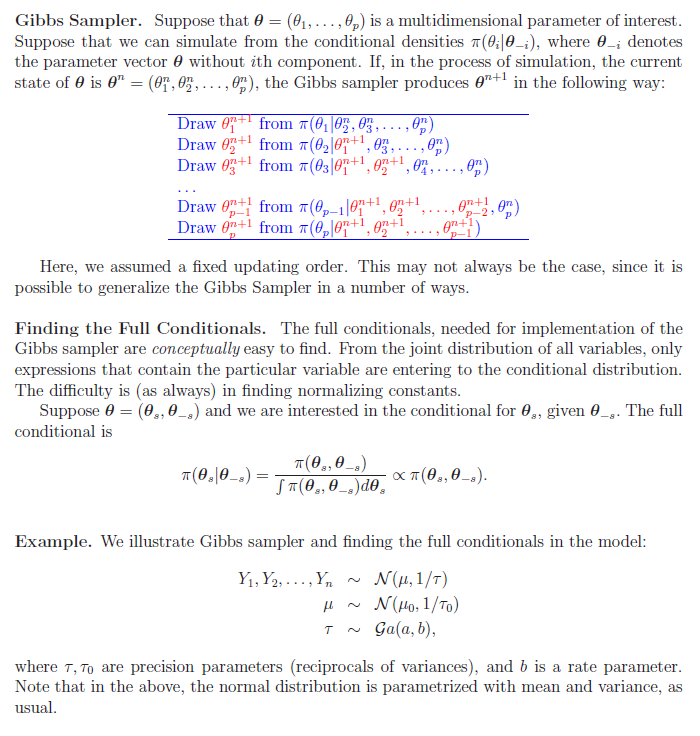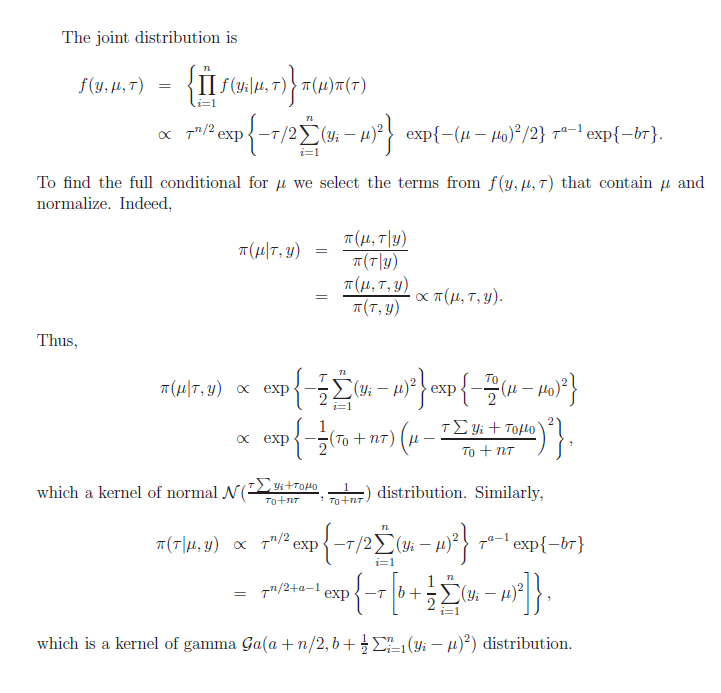Hello,
I need help with part (a) of the question below. I have include also some class notes that can be used to help with the process. While I understand the general process, getting started is overwhelming to me. Can someone please help me set up the problem / help me see the steps I need to take to solve?
Problem:
3. Gibbs and High/Low Protein Diet in Rats. Armitage and Berry (1994, p. 111) report data on the weight gain of 19 female rats between 28 and 84 days after birth. The rats were placed on diets with high (12 animals) and low (7 animals) protein content. High protein | Low protein 134 70 146 118 104 101 119 85 124 107 161 132 107 94 83 113 129 97 123 We want to test the hypothesis on dietary effect. Did a low protein diet result in signifi- cantly lower weight gain? The classical & test against one sided alternative will be significant. We will do the test Bayesian way using Gibbs sampler. Assume that high-protein diet measurements yu, i = 1,..., 12 are coming from normal distribution /(01, 1), where n is precision parameter, f(old. ) o / exp ( -01)3).=1.....12. N(0), 1/72) Low-protein diet measurements ya,i = 1,....7 are coming from normal distribution Assume that 6 and or have normal priors /(610, 1o) and N(620, 1/720), respectively. Take prior means as $10 = 02 = 110 (apriori no preference) and precisions as 710 = 720 = 1/100. Assume that n and re have the gamma Go(a,, b,) and Ga(as, by) priors with shapes a1 = 02 = 0.01 and rates by = by = 4. (a) Construct Gibbs sampler that will sample 61, 71, 62, and ? from their posteriors. (b) Find sample differences 6 - 6 . Proportion of positive differences approximates posterior probability of hypothesis Ho : 6, > 62. What is this proportion? (c) Using sample quantiles find the 95% equitailed credible set for 6 - 62. Does this set contain n?Gibbs Sampler. Suppose that H = (-91, . . . ,3?) is a multidimensional parameter of interest. Suppose that we can simulate from the conditional densities wf9g|9_,-}, where 3-,- denotes the parameter vector I9 without ith component. If, in the process of simulation, the current state of 3 is 9" = I: i\The joint distribution is f ( y, H, T ) = { II f ( yilRe, T ) I ( R) IT ( T ) ox Th/2 exp { -T/2) (yi - 1)2. exp{-(1 - Ho)2/2} 7"-1 exp{-by} 1=1 To find the full conditional for / we select the terms from f(y, (, T) that contain / and normalize. Indeed, T( U/ T, y) = TT ( 1, Tly) ( T y ) = TT ( H, T, y ) T ( T, y) OC TT ( M, T, y ) . Thus, "(UT, y) OC expl - (yi - 1)2 . exp { - (1 - No)?} x exp ( To+ nT ) ( 1 - [yi + TOMO )?] To + nT which a kernel of normal N ( ) Bi+TOMO To+nT TotnT ) distribution. Similarly, T (T M, y) o T / 2 exp{ -T / 2 ) (12 - 1)? ( 70-1 exp{-BT} = Tn/2+a-1 exp which is a kernel of gamma Ga(a + n/2, b+ } Er, (yi - ()?) distribution









